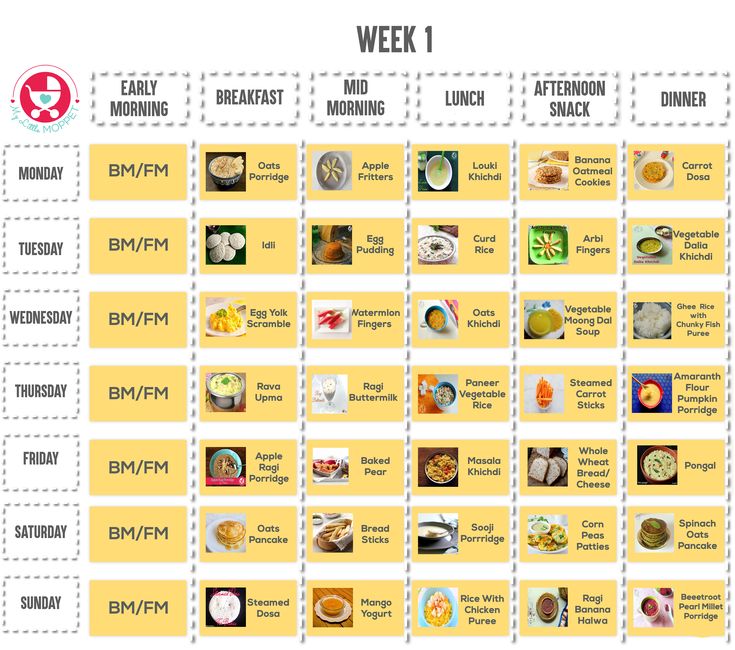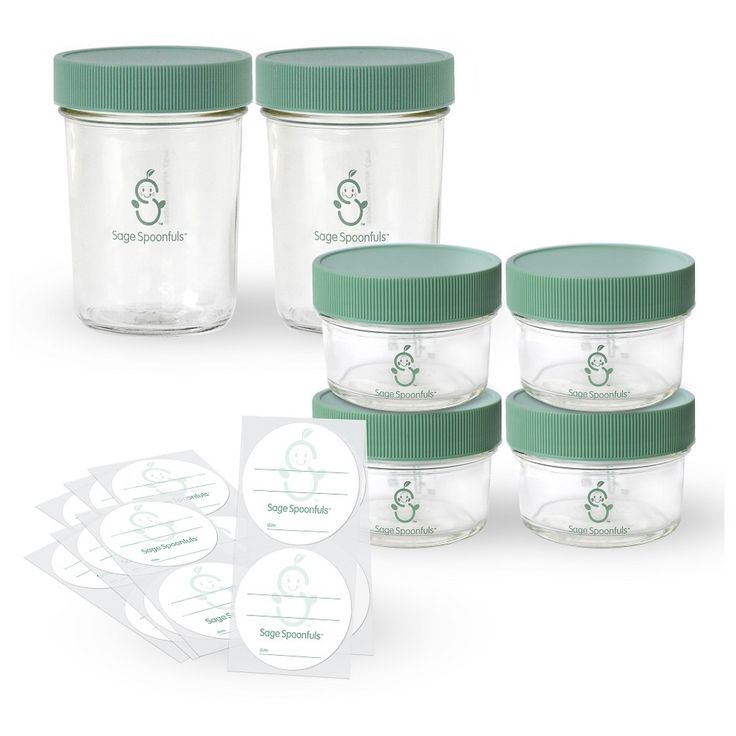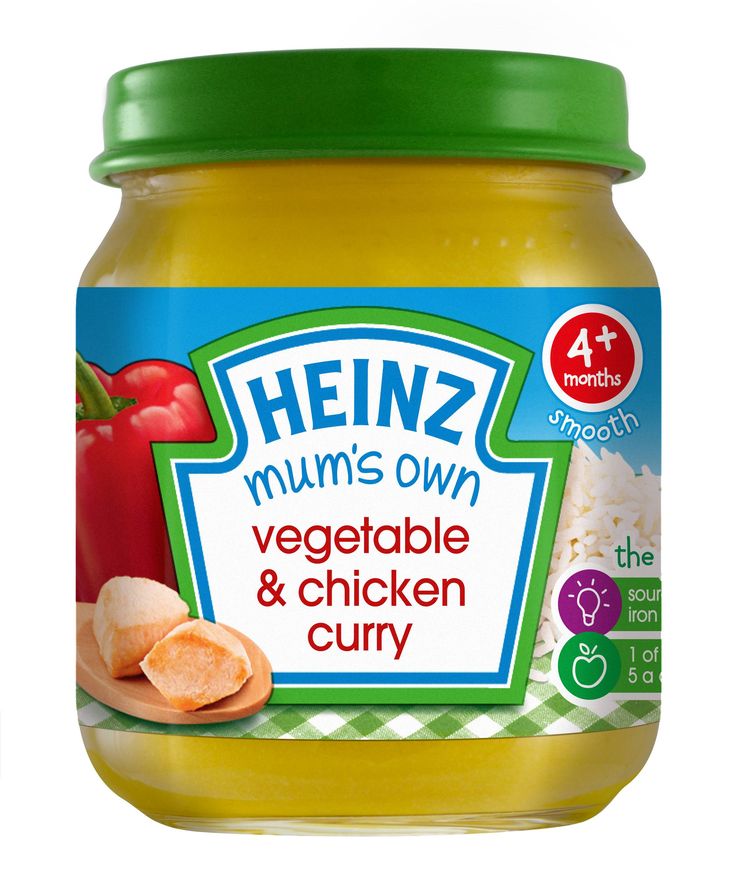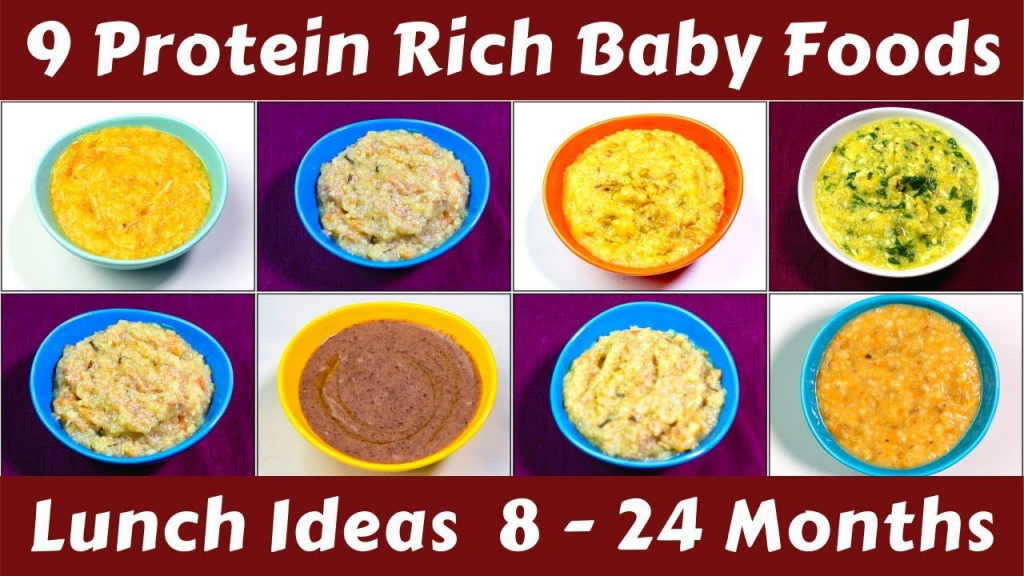Indian food chart for 18 months old baby
18 Month Baby Food Chart/ Toddler Food Chart/ Meal Plan for 18 months baby
18 Month Baby Food Chart
Toddler Food Chart (1.5 years)
Meal Plan for 18 months old baby
Food for 18 months old
Recipes for 1 and half years old
18 months is a tricky age. A baby is now almost definitely a toddler, i.e. she has started to walk with fair bit of comfort.. She is so keen to explore her surroundings that food is most probably the last thing on her mind. She wants to use her new-found independence by rejecting almost all advances to help her in any way. This includes feeding. Most parents face the challenge at this age where their toddlers do not want to be fed and they feel baby is eating almost next to nothing. I and my baby went through this phase too.
Many toddlers start looking skinny at this age which can be quite distressing for parents after having seen the chubby babyhood.
You can make life easier for yourself and your baby by following a few simple tips.
1)Go for finger food
Finger food at this stage can be a life-saver. Toddlers have a natural tendency to defy what others say. They want greater control of their environment and sitting and doing what others tell them to do goes against their grain. Finger food provide perfect way to eat them where they can control what and how much they are eating.
75+ finger foods that you can offer to your toddler and kid
2) Avoid food fights
Most parents get frustrated at this stage because toddlers just wouldn’t listen to what they want to tell them. You try to force-feed the kid and try to offer what you consider is ideal for her growth, but your little devil is having none of it.
The way out is to surrender and accept that you have to find a middle way. Offer food to child when she is hungry but do not fret if she does not finish it.
3) Make meal time fun
Toddlers love playing and are looking for new experiences. Try telling stories, make a game of eating.
My daughter is now 4 years old and I still tell her stories sometimes at mealtime. It doesn’t take much and meal time becomes pleasant. Stories make her even finish her milk which is certainly not a favourite. For a long time, I kept adding other foods to replace milk in her diet as she wouldn’t have any of it. But now, she drinks provided I tell her a story.
How to replace milk your toddler’s diet
4) No rushing mealtimes
You cannot expect an 18 months old to finish food in 10 minutes flat. It just will not happen. ACCEPT IT!! Keep a window of 30-45 minutes for meals at least. Post this, if your toddler is still not eating, just remove the plate. Do not force to finish.
5) Offer variety
Variety is the spice of life even for an 18 months old. Try to offer simple but different items to expand her palate and keep her interested in meals.
6) Eat together as family
This can be one of the best things to follow if you want your child to enjoy meals and have healthy habits in the long run. Children learn by following others and parents are the best role models. When children watch their parents enjoying healthy food they are more probable to try and enjoy them.
7) Praise but do not overdo it
Every one likes to get appreciated,so be lavish with praise but do not overdo it so that the child starts eating just to get praise. Food is essential for us and it should be enjoyed and chosen well for good health.
8) Talk to your kid about Healthy and Junk food
I can personally vouch for this. I was always vocal about what is healthy and what is not. My daughter knows chips and burgers are junk and homemade food is healthy and good for her. I however do not ban all junk completely. She has her occasional donut when we go out.
Idea is not to deprive but to enlighten them! Deprivation will only cause craving.
She knows vegetables are good for her. I get looks of surprises when people at restaurants see her asking for and devouring steamed vegetables and preferring watermelon over ice creams.
9) Be your child’s role model
Parents are their children’s first role models specially mothers. They want to emulate you and be like you. If you have good eating habits and are health-conscious, there is a fair bit of chance that they will be too.
10) Don’t worry about others
You will most probably get a lot of advice as well as comments about how you are feeding your child enough and child is losing weight blah blah. But if you and your child’s doctor are OK with how she is growing, learn to develop a think skin and ignore what they are saying.
You and your child will be better off in the long run.
If you have any doubts about your child’s growth, see Weight and Height Chart calculator
Here is a sample food chart/ meal plan for a 18 months old.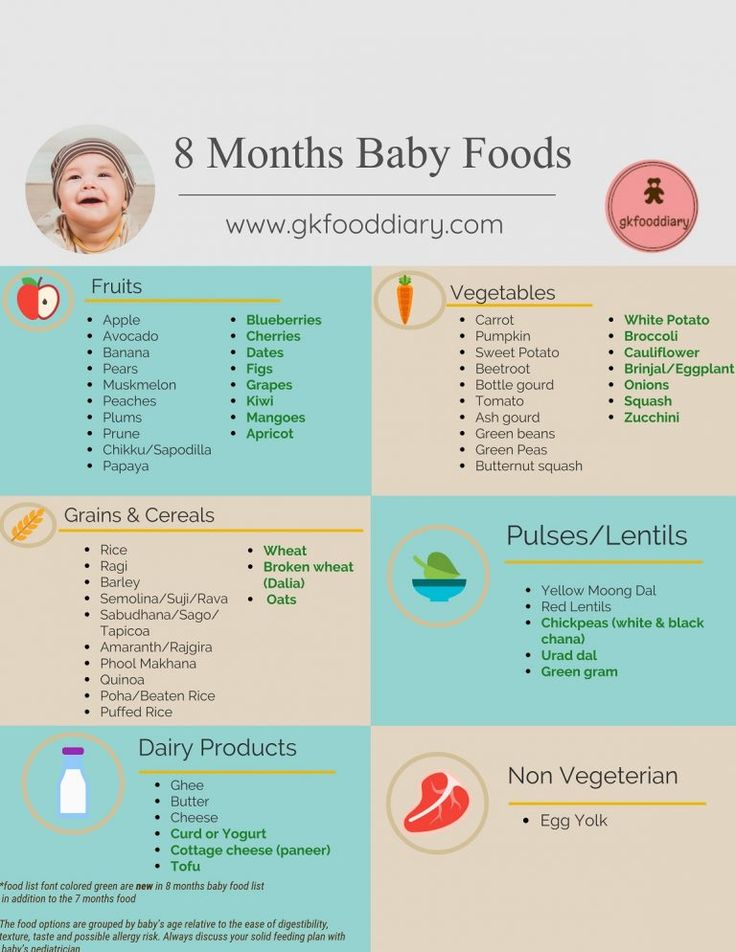
18 month baby food chart
More recipes to help you:
- 18 healthy meals for picky eaters
- 50 simple Breakfast recipes for kids
- Top 15 foods to help weight gain in toddlers
Feel free to modify this chart as per your and your toddler’s preference.
Tips to use 18 month baby food chart:
- Remember that these are only guidelines and you should use these as a reference but feel free to tweak as you might like for your baby.
- We try to introduce lot of variety of food to toddlers. This makes them more open to trying newer tastes and will help to ensure they are not picky about food.
- Since 18 months old toddlers may not eat a lot of food at one go, you have to keep offering them something every few hours.
- Your toddler might appear to have lost weight, which is quite normal as toddlers become more active at this stage. Even if your toddler looks skinny, try not to give unhealthy foods like too many sweets and fried items in the hope that she will gain some weight.
 It doesn’t work, in fact it will only reduce their appetite for healthy food.
It doesn’t work, in fact it will only reduce their appetite for healthy food.
See how to plan diet for an underweight toddler for healthy weight gain
We hope this food chart will help you in planning your toddler’s meals. If you like this, do not forget to share it. Please leave a comment to ask a question or let us know your feedback. You can follow us on Youtube, Facebook, twitter and pinterest.
Related:
Daily Routine/ Feeding Schedule of my 5 years old Preschooler
6 month baby food chart
7 month baby food chart
8 month baby food chart
9 month baby food chart
10 month baby food chart
11 month baby food chart
12 month baby food chart
15 month toddler food chart
2 year toddler food chart – Veg
2 year toddler food chart – Non veg
Like this:
Like Loading. ..
..
18 Months Baby Food Chart Indian And A Sample Meal Plan
Source:- Instagram
18 months i.e. 1½-year-old children start doing a lot of activities. By this time the kids start to run, play, cook themselves, etc. This is the best time to make children aware of new flavors and eating habits. While making 18 months baby food chart Indian, we should keep in mind that it is necessary to feed the baby in a very short period of time. All nutrient elements in the food chart for 18 months Indian baby should be in equal amounts.
Table of Contents
- 1. How Often Should You Feed 18 Month’s Baby?
- 1.1 A Sample Meal Plan:
- 2. 18 Months Baby Food Chart Indian Should Contain:
- 2.1 Dairy Products
- 2.2 Whole Grains
- 2.3 Fruits & Dry Fruits
- 2.4 Meat Products & Eggs:
- 2.5 Vegetables
- 2.6 Legumes
- 2.7 Healthy Fats
- 2.
 8 Iron-Rich Foods
8 Iron-Rich Foods
Your 18-month-old baby is not going to like simple biscuits, milk or any tasteless foods. He is growing up and so both his taste and choice are changing. Therefore, by adding some variety to the food of the child, you will meet his nutritional requirements to a large extent and also introduce them to different tastes. So, here in this article below we have provided 18 months baby food chart Indian and food tips for your 18-month-old child that meet almost all the nutritional needs of them.
How Often Should You Feed 18 Month’s Baby?Children of 18 months should consume at least 5-6 times a solid diet and milk twice (Half a glass of milk in the morning and other half at bedtime) should be given to the baby daily. Apart from this, if the child is hungry after these 5-6 times, then give some light snacks to your kid.
Source:- Instagram
A Sample Meal Plan:Here I have provided a sample mean plan for 18 months baby.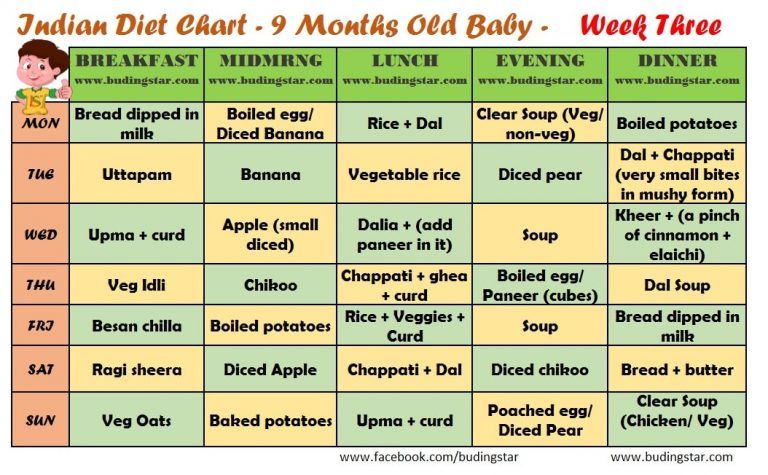 Check out the sample meal plan to get a brief idea of what should you give your kid:
Check out the sample meal plan to get a brief idea of what should you give your kid:
A quick glance at the 7-day sample meal plan for 18 months i.e. 1½ years baby
| Time | Day 1 | Day 2 | Day 3 | Day 4 | Day 5 | Day 6 | Day 7 |
| Early Morning | 3-5 soaked almonds | ½ to 1 cup of milk | 3-5 soaked almonds | ½ to 1 cup of milk | 3-5 soaked almonds | ½ to 1 cup of milk | 3-5 soaked almonds |
| Breakfast | Dalia Upma | Plain Idli with Coconut chutney | Peanut butter Sandwich | Oats apple porridge | Chocolate pancake with the strawberry milkshake | Egg & salad sandwich/ Paneer bhurji sandwich | Besan cheela |
| Mid-Morning | 1 small banana | Papaya pieces | Orange wedges | Guava slices | Kiwi slices | Melon cubes | Strawberry quarters |
| Lunch | Spinach Khichdi | Rice with egg curry (with less spice) and Dal | Vegetable & Dalia Khichdi with yogurt
| Rice, dal & peas cauliflower curry | Masoor dal khichdi | Rice, dal and chicken curry (with less spice) | Mixed dal, roti, kheer |
| Evening Snack | Cheeku shake | Bread Pizza | 1 cup Almond milk | Chicken soup | Fruit smoothie | Soya cutlets | 1 cup Almond milk |
| Dinner | Matar Paneer with 1 roti | Vermicelli upma | Whole grain roti with Chicken curry | Aloo Paratha | Matar Paratha | Vegetable Khichdi with curd | Paneer parantha |
| Bedtime | ½ to 1 cup of buttermilk | ½ to 1 cup of milk | ½ to 1 cup of buttermilk | ½ to 1 cup of milk | ½ to 1 cup of buttermilk | ½ to 1 cup of milk | ½ to 1 cup of buttermilk |
Here I am naming the nutrient elements that you must add to the diet chart for 18 months baby to help your baby develop both mentally and physically and in a healthy way. Let’s check out the 18 months baby food chart Indian below:
Let’s check out the 18 months baby food chart Indian below:
Source:- Instagram
Dairy ProductsDairy products like milk are definitely one of the major foundational elements that help in the kid’s growth during its early years. Although full cream milk is greatly recommended for weak babies especially; you can give supplementary products to diet chart for 18 months Indian baby including cottage cheese, clarified butter, yogurt, etc.
Source:- Instagram
Whole GrainsThe advantage of eating whole grain nutrients isn’t instantly noticeable; however, it internally takes place over time. The simplest habits like using bread produced from whole grain over refined grain wheat can bring an improvement in the baby’s health.
Source:- Twitter
Fruits & Dry FruitsDo not forget to include fresh fruits in your 18 months baby food chart Indian because it is one of the greatest ways to give your baby the necessary amount of nutrition. Do not also forget to add dry fruits in your 18 months baby food chart Indian as well, as dry fruits have a lot of nutrients to fulfill the necessity of your kid’s nutrition. You can add this food to your 6 months baby food chart for Indian.
Do not also forget to add dry fruits in your 18 months baby food chart Indian as well, as dry fruits have a lot of nutrients to fulfill the necessity of your kid’s nutrition. You can add this food to your 6 months baby food chart for Indian.
Source:- Instagram
Meat Products & Eggs:As your kid grows he or she will start to desire meat, and the digestive system to gets stronger with time. Nevertheless, a balanced amount of meat product intake, together with eggs, will prove to be a good approach to meet your baby’s protein requirements. You can also include this to the Indian baby food chart for 15 months baby.
Source:- Instagram
Vegetables:Just like the fruits and dry fruits, vegetables also are a good source of vital nutrients that your kid needs for his or her mental and physical development. Vegetables are very low in fat & calories, which makes vegetables an essential supplement in every single meal of your kid.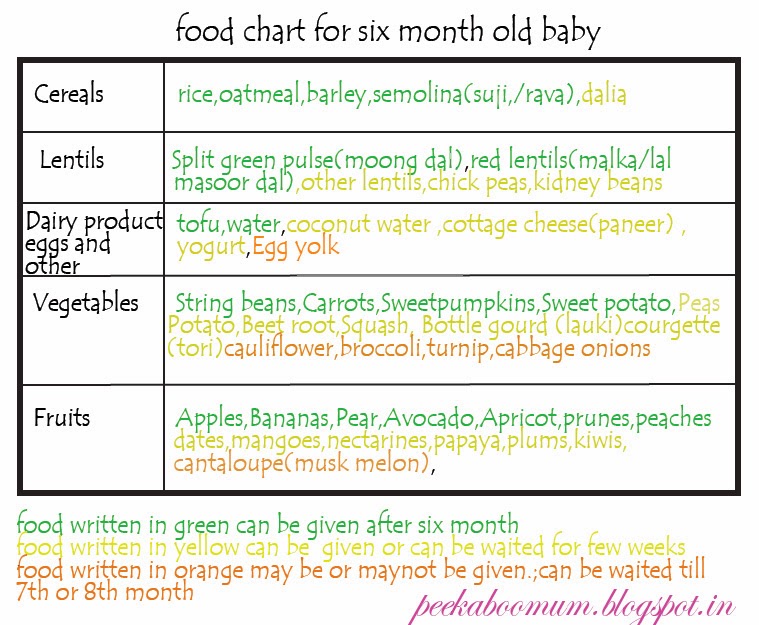
The higher your kid consumes vegetable, the healthier he or she will become. However, you may face a hard time getting the kids to consume vegetables and you may also have to force them to consume vegetable. No matter how hard it is… you have to do it for your baby’s sake.
Source:- Twitter
LegumesSome individuals may tend to put leguminous nutrients in their vegetable preparations on a daily basis while others may go for the nuts sometimes. If your kid is sensitive to the nuts, you can then try to use legumes instead of using nuts in your kid’s foods.
Source:- Twitter
Healthy FatsYour baby’s appetite wouldn’t be as much as it used to be previously. Henceforth, it is essential to confirm your baby gets sufficient amount of healthy fat on a regular basis. You can give some butter or add a little clarified butter in the cooked meal or you can also feed your kid some fat-rich fruits.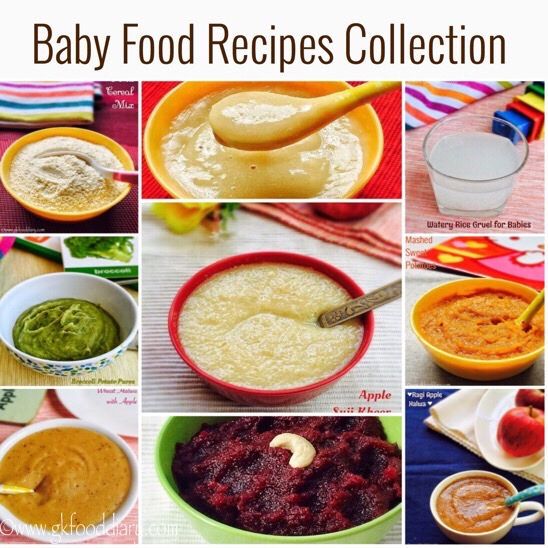
Source:- Twitter
Iron-Rich FoodsOne of the most important supplements for your kid is iron-rich foods. So do not forget to add this to your baby’s 18 months baby food chart Indian to keep the baby healthy. It is essential to confirm that your child keeps getting substances like spinach, broccoli, and other iron-rich foods on a daily basis in the meals.
Recommended Articles:-
- Healthy Diet Chart For Indian Family
- Food For 2 Year Old Baby To Gain Weight
- 2 Year Old Baby Foods for your baby’s sound health
- Effective Food For 1 Year Old Indian Baby To Gain Weight
- Foods That Help Baby Gain Weight Faster In A Healthy Way
- Indian Pregnancy Diet Chart: 7-Day Diet Plan For Pregnancy
Union of Pediatricians of Russia
Nutrition for children from 1 to 3 years of age
The period from 1 to 3 years of life is a crucial stage in the transition to an adult type of nutrition, which has certain features.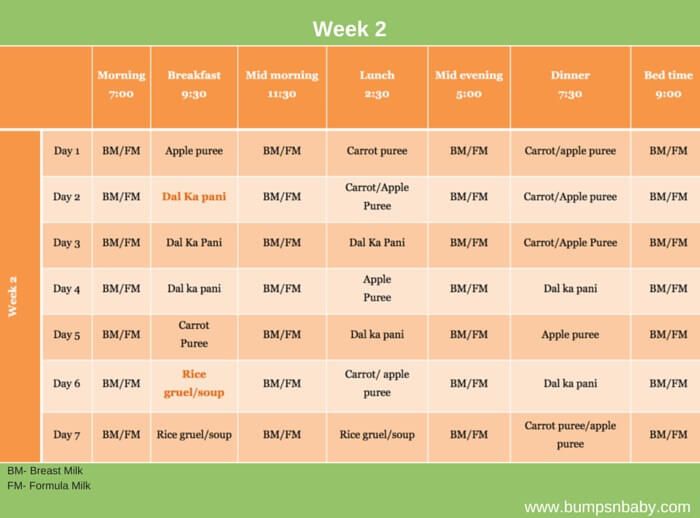 In order to ensure that all the necessary nutrients enter the child's body and at the same time prevent an excess of individual nutrients, nutrition should be balanced and varied.
In order to ensure that all the necessary nutrients enter the child's body and at the same time prevent an excess of individual nutrients, nutrition should be balanced and varied.
The daily amount of food for children aged 1 to 1.5 years should be 1000-1200 g, from 1.5 to 3 years - 1200-1500 g, the amount of food in one feeding should not exceed 300-350 ml. The diet consists of three main meals per day and two snacks. It is considered optimal when breakfast is 25% of the total energy density of the diet, lunch is 30–35%, dinner is 20%, and additional meals are about 10%. In general, the child can eat the same food as the rest of the family.
In the diet of a child of 1–3 years of age , must be present daily: meat of animals or poultry, dairy and sour-milk products, vegetables, fruits, bread, cereals, vegetable and butter; fish and eggs are included in the diet 2-3 times a week.
Cereal products: bread - 2-3 servings per day, cereals and side dishes - 1 time per day
Fruit and/or vegetables: at least 5 times a day
Dairy products: at least 3 servings per day (including those used to make cereals, yoghurts, fermented milk drinks, cottage cheese, infant formula or breast milk).
Domestic pediatricians recommend, when compiling a diet for children aged 1–3 years, preference should be given to specialized children's dairy products of industrial production that meet high quality requirements and safety indicators for this age. Most children's dairy products are additionally enriched with vitamins and/or minerals and other biologically active components, taking into account the physiological needs of children of this age. At the same time, in foreign recommendations, children over 1 year old are offered the gradual introduction of whole cow's milk, which is rich in fats necessary for proper growth and development, the absorption of vitamins A and D, the development of the child's brain and nervous system.
Meat dishes: 2-3 times a day
Fish dishes: 2-3 servings per week
Eggs: 2-3 per week
Dietary fats: 3-4 teaspoons of butter and/or vegetable oils per day
When cooking, use the minimum amount of salt and sugar, and do not add them to industrial products.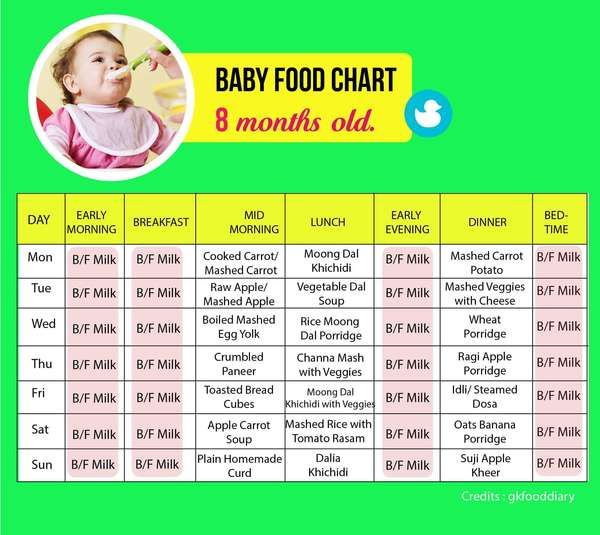
Offer your child a variety of foods and let them choose for themselves. Children love to eat on their own, so if possible, offer food that the child can eat with their hands.
It is important to remember that a baby can choke on pieces of food, so whatever you give your baby should be crushed or cut into small pieces that can be easily chewed.
Do not give to a small child: nuts, whole grapes, cherry tomatoes (unless quartered), whole carrots, seeds (such as pumpkin or sunflower seeds), round candies, legumes, raisins, because a child can eat them choke.
Also in the diet of children of the first 3 years of life should not be present:
Mushrooms; canned snacks, pickled vegetables and fruits
Home canned food
Dry concentrates for side dishes
Hot sauces, mustard, horseradish, pepper, vinegar, mayonnaise
Natural coffee
Juices and drinks in the form of dry concentrates; sweet carbonated drinks
Products containing food additives (flavorings, dyes of artificial origin, including chewing gum), popcorn
Combined fats; cakes and pastries
It is important to remember that children of this age should not be given too spicy and spicy foods.
Baby menu at 9 months
6-12 months
Article
5/5 1 reviews
Although breast milk or formula remains the mainstay of infant nutrition at this age, a 9-month-old baby's menu becomes more varied with new complementary foods. The correct diet of the child is the basis of his harmonious development, good health and good mood. But how to organize a diet, what can be given at this age and how much should a child eat at one meal?
8 min. for reading Feb. 17, 2022
The correct diet for a nine-month-old baby includes 5 meals: a day the baby receives liquid food twice and thick food three times. This is due to the fact that mashed potatoes and cereals take longer to digest than milk, so they give the baby a longer energy supply. Feeding is usually carried out at intervals of 4 hours. If the baby asks to eat 2-3 hours after liquid food, offer her a baby snack, fruit or vegetable (in small pieces or in the form of a puree).
Feeding is usually carried out at intervals of 4 hours. If the baby asks to eat 2-3 hours after liquid food, offer her a baby snack, fruit or vegetable (in small pieces or in the form of a puree).
A 9-month-old baby's daily diet includes many healthy foods and drinks that provide essential nutrients such as vitamins, proteins, carbohydrates, fats and minerals. In addition to milk and infant formula, the following foods can be given to a child:
- Fruits and vegetables in the form of puree (apple, pear, cauliflower, etc.)
- Fruit juices and compotes without sugar.
- Meat in various forms.
- Fish.
- Kashi from various cereals.
- Chicken or quail egg yolk.
- Children's fresh cottage cheese.
- Children's low-fat kefir.
- Children's cookies, croutons, bread.
Read also: The baby refuses new products
According to WHO recommendations, by the 9th month, all of the above products should already be on the menu.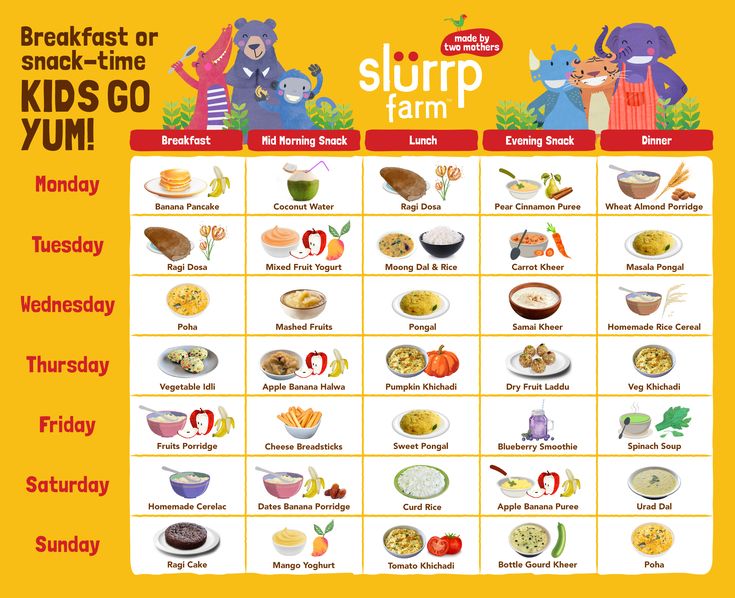 If something from the food is still unfamiliar to your child, it is recommended to gradually add it to the diet.
If something from the food is still unfamiliar to your child, it is recommended to gradually add it to the diet.
Start with smaller portions and see how your child reacts to the new food. If there is no allergic reaction to the product, you can increase the volume and add it to new dishes. New complementary foods are recommended to be introduced at intervals of 5-7 days. An indicative table for one day will help to create an optimal diet for health. It also shows how much formula or milk the baby should eat per day.
* infant formula.
**Dairy-free porridge should be diluted with breast milk or infant formula given to the baby. Milk porridge is diluted with water.
| I feeding 6 hours | Breast milk or formula for infants with cow's milk protein intolerance | 200 ml |
| II feeding 10 hours | Dairy-free porridge* | 180 g |
| Vegetable oil < | about 1 tsp | |
| Fruit puree (apple, pear) | 70 g | |
| III feeding 14 hours | Vegetable puree or pureed soup | 180 g |
| Vegetable oil | about 1 tsp. | |
| Meat puree (rabbit, turkey) | 50 g | |
| Fruit juice | 70 g | |
| IV feeding 18 hours | Fruit puree | 50 g |
| Vegetable puree or dairy-free porridge | 180 g | |
| Vegetable oil | about 1 tsp. | |
| Meat puree | 50 g | |
| V feeding 22 hours | Breast milk or formula for infants with cow's milk protein intolerance | 200 ml |
*dairy-free porridge should be bred with breast milk or it is safe for children with allergies to cow's milk proteins.
** you can eat porridge or vegetables, so you can eat grass - porridge with vegetables.
1st day
| First breakfast | Breast milk or formula |
| Second breakfast | Buckwheat porridge with pumpkin, juice |
| Lunch | Pumpkin steam cutlets, veal puree |
| Snack | Rusks or baby biscuits, yoghurt |
| Dinner | Cauliflower puree |
| Second dinner | Breast milk or formula |
2nd day
| First breakfast | Breast milk or formula |
| Second breakfast | Oatmeal, berry juice |
| Lunch | Steamed fish, rice, fruit compote |
| Snack | Vegetable puree |
| Dinner | Vegetable puree |
| Second supper | Breast milk or formula |
3rd day
| First breakfast | Breast milk or formula |
| Second breakfast | Semolina porridge, quail egg yolk |
| Lunch | Steamed zucchini, boiled veal, apple compote |
| Snack | Pumpkin and apple puree |
| Dinner | Curd casserole with carrots |
| Second supper | Breast milk or formula |
Fourth day
| First breakfast | Breast milk or formula |
| Second breakfast | Rice porridge, fruit puree |
| Lunch | Mashed potatoes or turkey meatball soup |
| Snack | Carrot-apple juice |
| Dinner | Kefir |
| Second supper | Breast milk or formula |
5th day
| First breakfast | Breast milk or formula |
| Second breakfast | Oatmeal and apple puree |
| Lunch | Cream soup with chicken and vegetables |
| Snack | Carrot juice |
| Dinner | Cauliflower puree, crackers or bread |
| Second supper | Breast milk or formula |
6.
 Sixth day
Sixth day | First breakfast | Breast milk or formula |
| Second breakfast | Rice porridge, half yolk (chicken egg) |
| Lunch | Vegetable soup with chicken breast, juice |
| Snack | Baked apple |
| Dinner | Spinach mashed potatoes |
| Second supper | Breast milk or formula |
Seventh day
| First breakfast | Breast milk or formula |
| Second breakfast | Millet porridge, croutons |
| Lunch | Steamed chicken cutlets, vegetable puree |
| Snack | Apple juice |
| Dinner | Curd with fruits |
| Second dinner | Breast milk or formula |
Parents need to gradually accustom the child to eating thick food, because now he is moving to a new level of development: more teeth appear, so the baby can now chew food. If this is not done in a timely manner, a baby may refuse solid food in a year. Changing the consistency of dishes favorably affects the development of the digestive system.
If this is not done in a timely manner, a baby may refuse solid food in a year. Changing the consistency of dishes favorably affects the development of the digestive system.
No need to grind fish and potatoes in a blender - just put the food on a plate and mash well with a fork. Meat can be offered in the form of meatballs to develop chewing skills. It can be turkey, rabbit, veal, beef, chicken. The norm of meat for one meal is 60-70 g.
It is quite normal if at first large pieces in a dish cause discontent in a child or even a gag reflex - he will soon get used to it. Sometimes it happens the other way around - the baby willingly tries the pieces, but refuses pureed food. Treat your baby with apple slices, bread, crackers or baby snacks. But the meat is still better to grind thoroughly.
At this age, consumption of mother's milk or adapted formula decreases. There are only two feedings per day - in the morning and in the evening. Everything else is "adult" food. Ideally, the baby should sleep through the night and get up at 06:00-07:00. If the little one wakes up at night, it is already possible to gradually wean him from feeding at night (provided that he is gaining weight normally). You can consult with your pediatrician about this.
Ideally, the baby should sleep through the night and get up at 06:00-07:00. If the little one wakes up at night, it is already possible to gradually wean him from feeding at night (provided that he is gaining weight normally). You can consult with your pediatrician about this.
Please note that uneaten food (already cooked) must not be stored and reheated. It is also not recommended to add sugar and salt to the dish.
If you give your child ready-made baby puree, we recommend that you do not feed him immediately from a jar, but pour the right amount onto a plate. In this case, the rest can be stored in the refrigerator for another 24 hours.
Find out more: Baby Portion
Pay attention to the quality of food you cook: appearance, smell and expiration date. It is better to use seasonal vegetables and fruits, and shop in trusted places.
Wash food thoroughly under running water before cooking. You can also use special children's products for washing fruits and vegetables.
All products must be brought to full readiness, and then thoroughly crushed to the desired consistency, so that the baby can comfortably chew small pieces. After eating, wash the dishes with a special detergent.
How to properly feed a 9-month-old baby if he refuses food and does not eat the foods you suggest?
Poor appetite is one of the indicators of a baby's health. The problem may concern the digestive tract, glucose levels, central nervous system. The feeling of hunger appears when the level of sugar in the blood decreases. But for this you need to take breaks between meals. Also, the smell of food affects the appetite - it causes the release of gastric juice.
How to regain your appetite:
- observe the diet;
- develop a delicious menu for a baby at 9 months;
- Serve dishes beautifully and set the table;
- ventilate the room before eating;
- let the baby use cutlery.
See also: The baby does not eat well, how to feed?
In order for the baby to eat willingly, he must be in an excellent mood. Try to avoid stressful and nervous situations, feed him in a calm, comfortable atmosphere.
Try to avoid stressful and nervous situations, feed him in a calm, comfortable atmosphere.
If the baby refuses to eat or eats very slowly, do not rush or force him to eat. Also, do not force the little one to eat foods that he refuses. Otherwise, in the future, he will have a negative attitude towards the feeding process, refuse to eat any food at all. He can even feel sick and vomit only with one kind of food.
Important
Games and cartoons during meals do not really improve appetite. On the contrary, in this way you only teach the baby to eat without noticing the dishes.
With the help of our tips, you can create a menu for a child at 9 months for every day, which will meet the requirements of a healthy diet and preferences of the baby
1. What should not be given to a child at 9 months?
It is not recommended to give cow's milk until the age of one. It contains too much calcium, which overloads the kidneys, and protein, which is poorly digested.